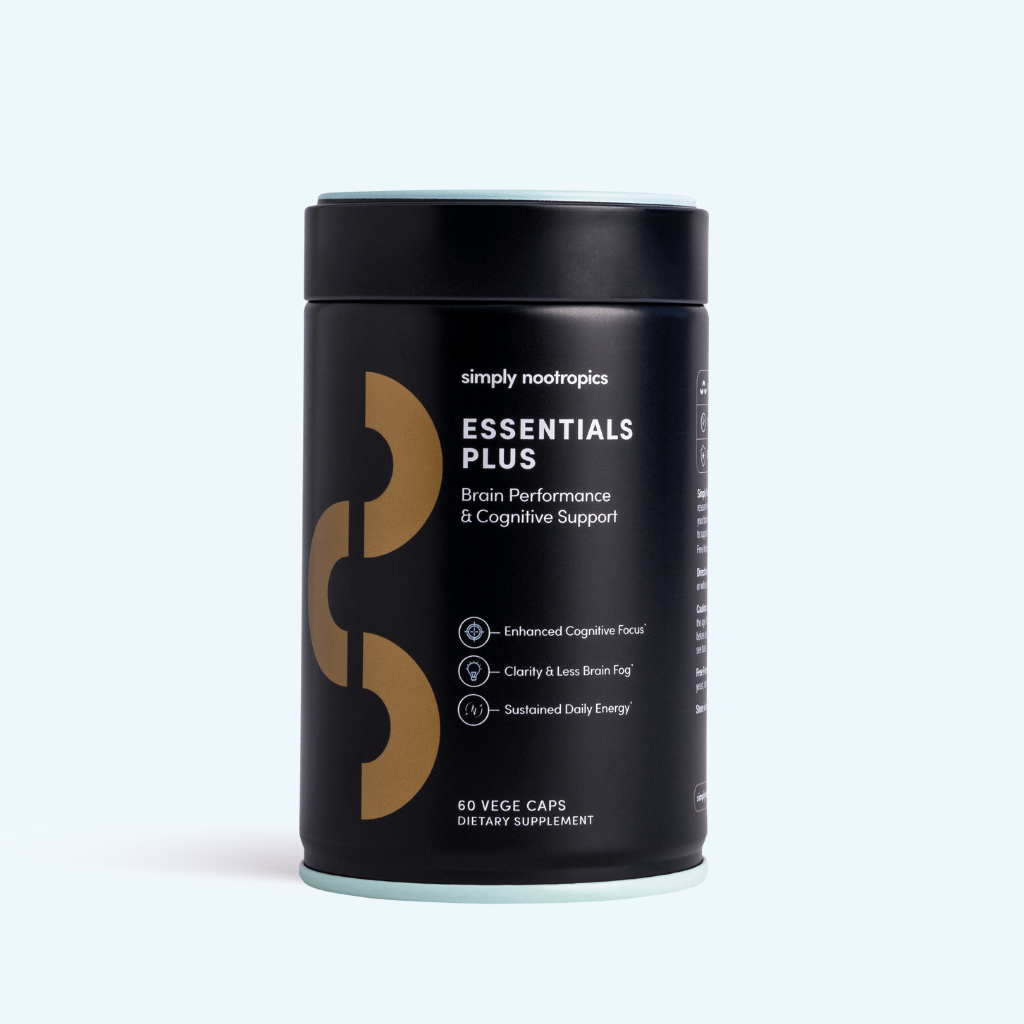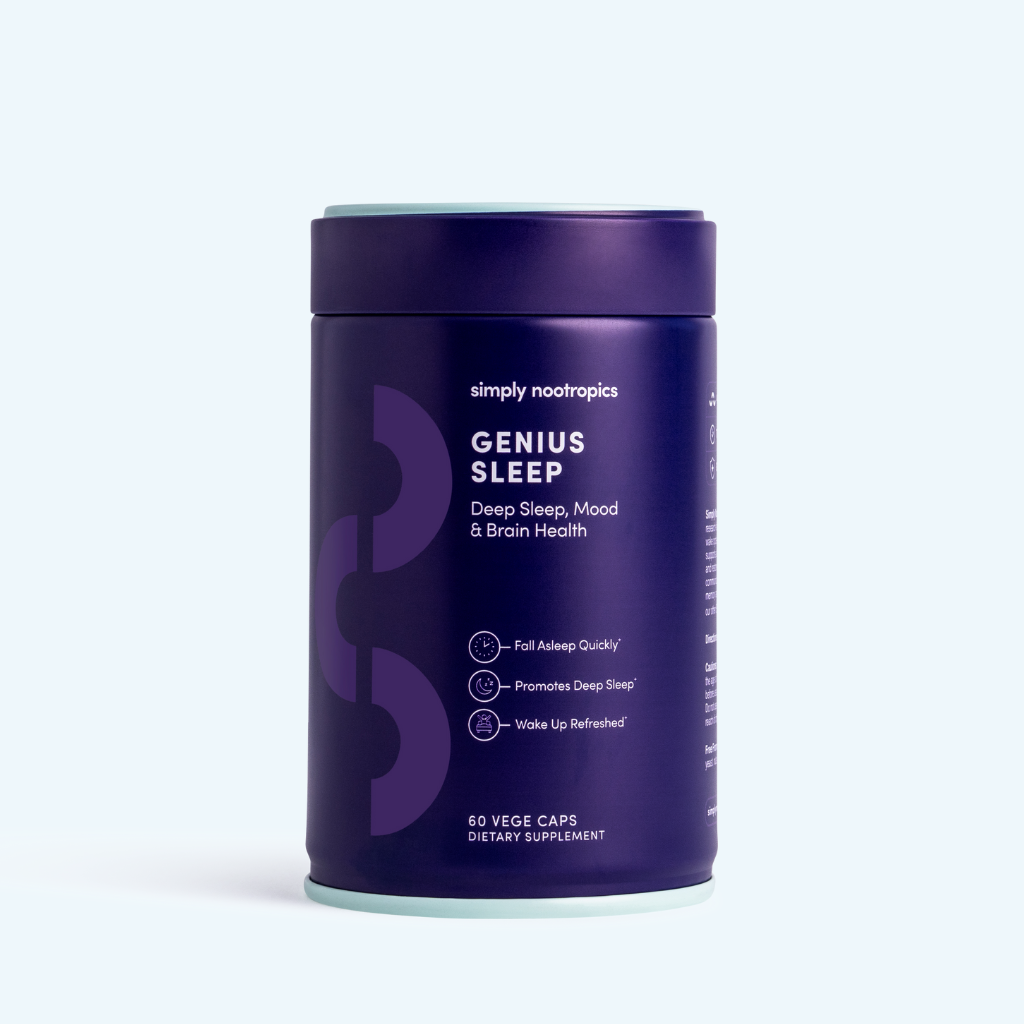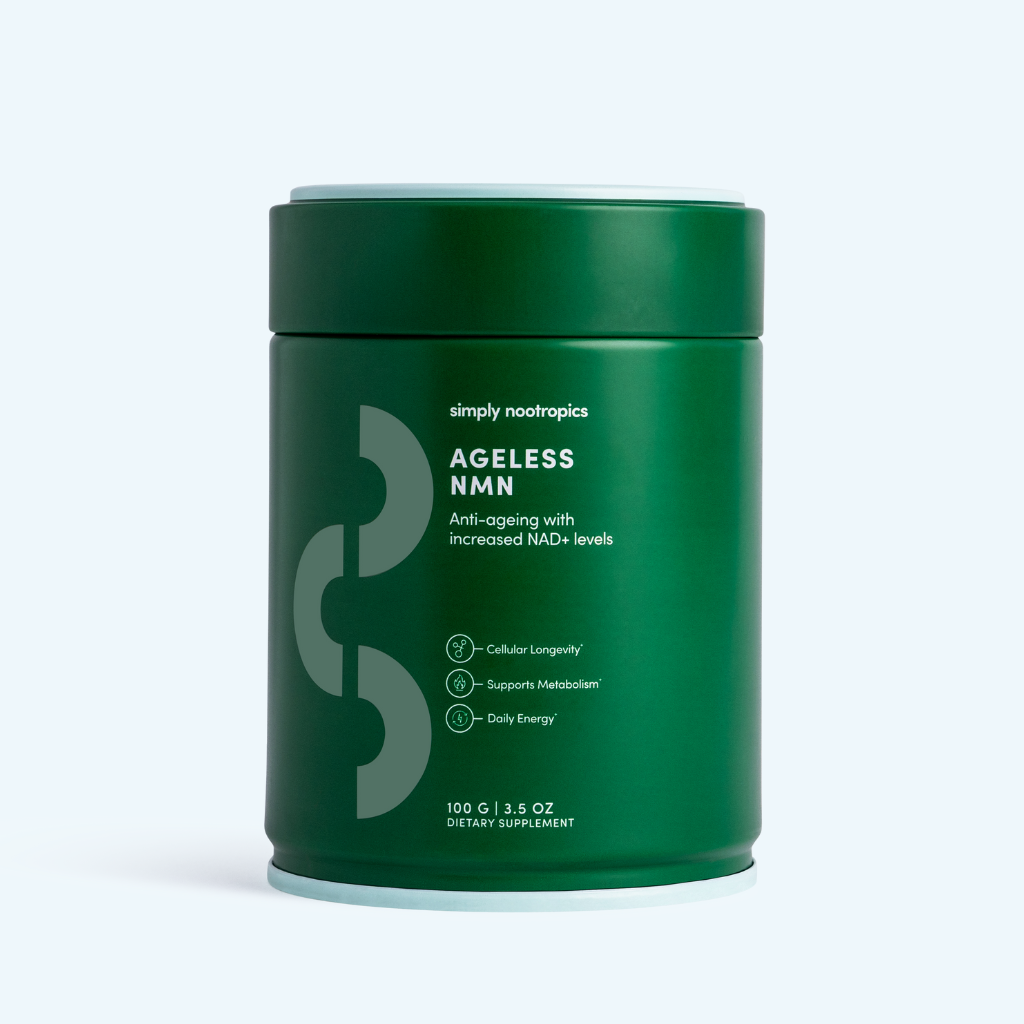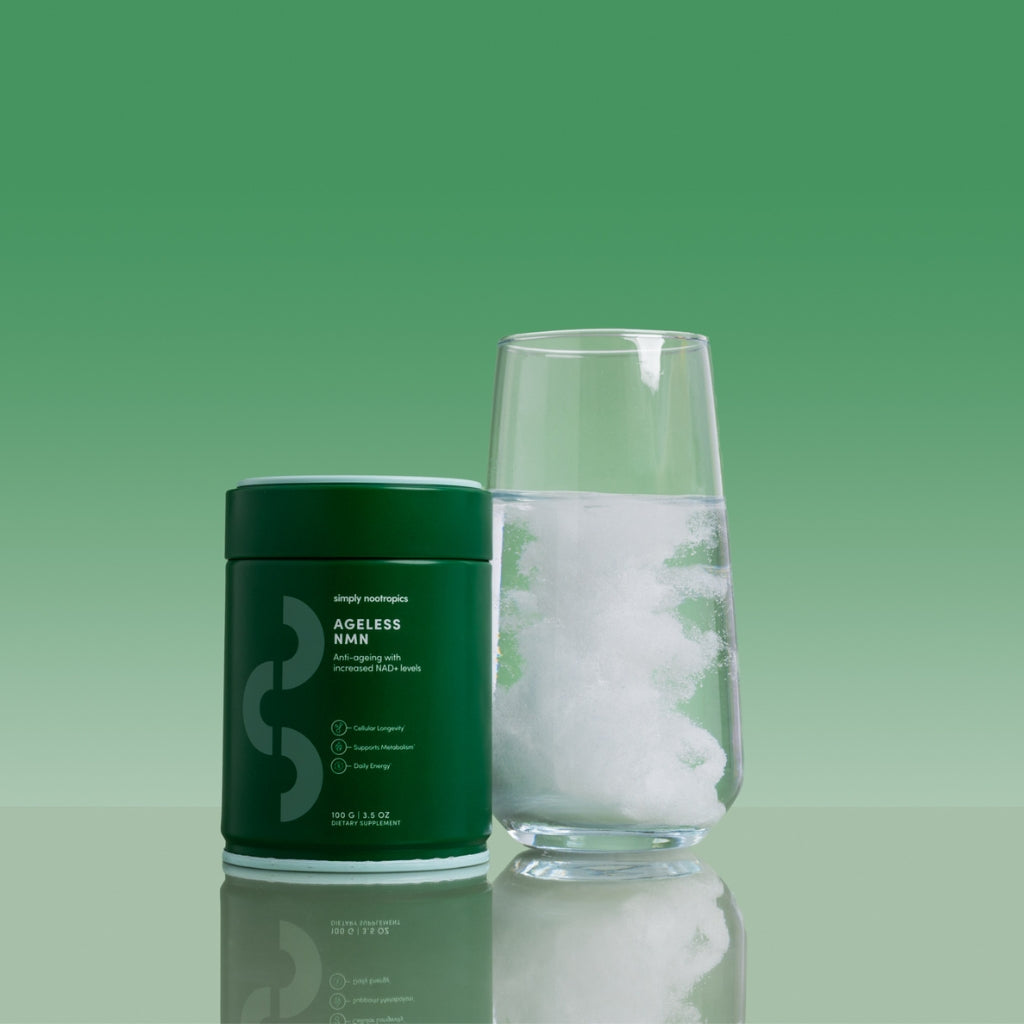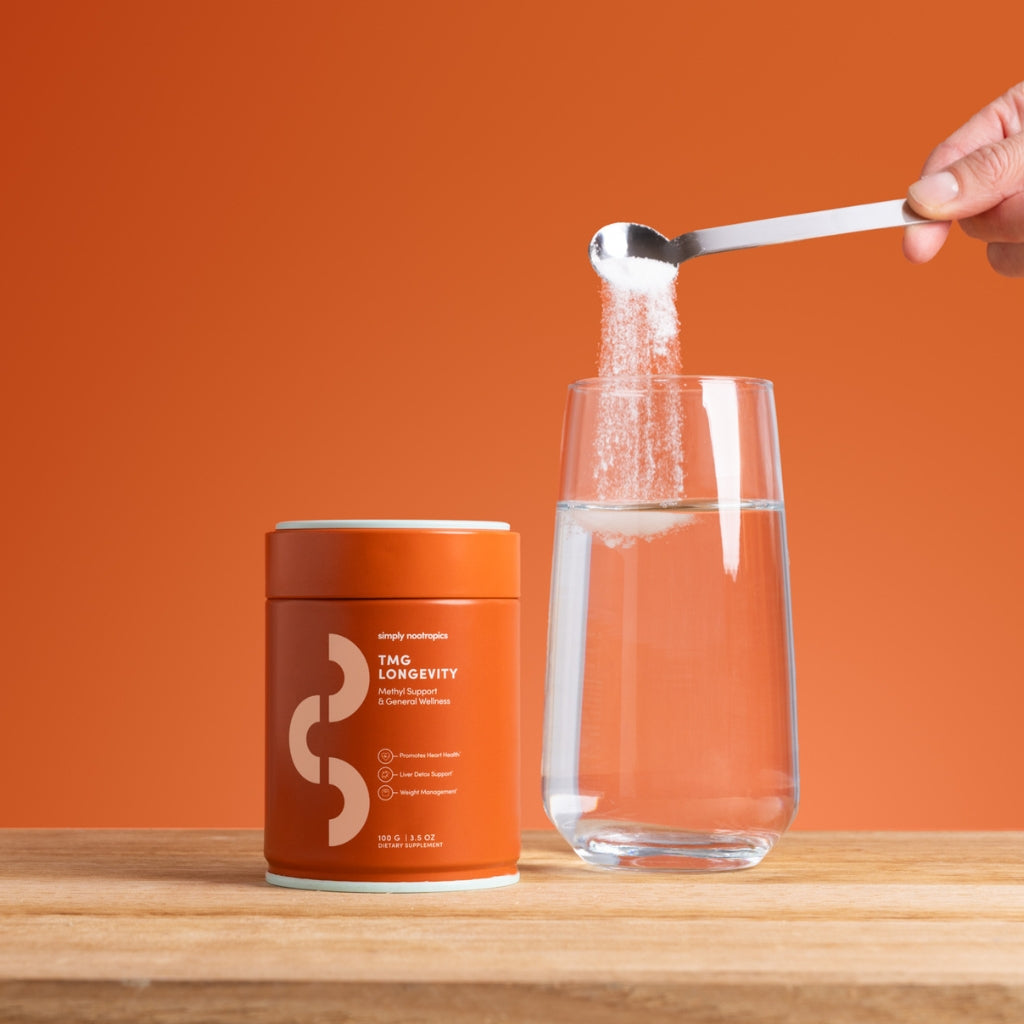If you’ve been in the loop on NAD+ supplements like NMN, you’ve probably seen TMG, short for trimethylglycine, come up as a recommended add-on. And for good reason: TMG plays a vital role in methylation, liver function, and cellular protection. But what’s less discussed is where TMG actually comes from in the real world, and whether food alone is enough to meet your body’s needs.
TMG is found in plenty of familiar foods. The more complicated reality: unless you’re eating like a 1950s dietician with a love of wheat germ and seafood, you might not be getting enough to support optimal methylation, especially if you’re supplementing with NAD+ precursors.
Let’s break it down: where TMG hides in your diet, and how to think about supplementation in a modern context.
What is TMG and why does your body need it?
TMG (trimethylglycine) is a naturally occurring compound found in plants, animals, and microorganisms. It was first discovered in sugar beet juice, and is still commonly extracted from sugar beet molasses for use in supplements today. TMG has two main physiological jobs:
-
As a methyl donor, it donates methyl groups to support essential processes like detoxification, liver function, and the regulation of homocysteine, a compound that, when elevated, is linked to heart and cognitive risks.
-
As an osmolyte, it helps cells maintain structure and hydration under stress, particularly in the liver and kidneys, where cell volume and stability are critical for function.
A review in the American Journal of Clinical Nutrition laid out just how widespread TMG’s effects are, from improving liver fat metabolism to enhancing performance and protecting organs from environmental stress. It’s not trendy, but it’s foundational.
And while your body can produce TMG by converting choline (with the help of certain enzymes), that process isn’t always efficient, especially if you’re low on NAD+ or dealing with stress, poor diet, or inflammation. That’s where dietary intake becomes important.
Top food sources of TMG
TMG is more common in food than you might think, but not always in the amounts your body might need, especially under extra metabolic strain.
Here are some of the richest natural sources:
1. Wheat Germ and Wheat Bran (≈1%)
These grain components are at the top of the TMG chart. Wheat bran contains around 1339 mg of TMG per 100g, and wheat germ follows closely at 1241 mg. That’s a solid dose, but refined wheat products like white bread or pasta don’t contain these parts of the grain, which means most modern diets are lacking.
Adding wheat germ to smoothies or choosing high-bran cereals can help, but it’s still tricky to hit gram-level TMG intakes consistently.
2. Spinach (≈600–645 mg per 100g)
A favourite in the wellness world, spinach also delivers a generous helping of TMG. It’s one of the most accessible plant-based sources, and you can use it raw, steamed, or added to soups. But be aware: boiling spinach significantly reduces TMG content, as the compound leaches into the cooking water.
Pro tip: toss raw spinach into a smoothie or stir it into a warm dish after cooking to preserve more of the good stuff.
3. Beets (≈114–297 mg per 100g)
Beets aren’t just for juice bars. Roasted, grated, or juiced, they provide a reliable source of TMG, hence their historic connection to the nutrient. They're also rich in nitrates, which support blood flow and stamina, making them a solid dual-action food.
4. Shrimp (≈219 mg per 100g)
Marine foods like shrimp and other shellfish contain moderate amounts of TMG. This is particularly useful if you eat seafood regularly, as they also offer complementary nutrients like choline, B12, and selenium, all of which support methylation and detox pathways.
5. Whole Grain Breads and Crackers (≈200 mg per 100g)
While not typically thought of as nutrient-dense, whole grain pretzels, wheat bread, and even some crackers retain trace amounts of TMG, sometimes as much as 237 mg per 100g. These aren’t your primary sources, but they can help fill in gaps over time.
How much do you actually need?
Most estimates suggest that a typical Western diet provides between 0.5 to 2.5 grams of TMG per day, depending on how much whole grain, leafy greens, and seafood you’re consuming. The upper range is generally only reached with a high-intake, whole-food diet: think bran cereal for breakfast, a spinach salad for lunch, and shrimp stir-fry for dinner.
And even then, things get tricky. Boiling, processing, and food source variations all affect how much TMG you’re actually absorbing. The AJCN review points out that cooking methods, especially boiling, can result in substantial TMG loss. That means even spinach and beets may not deliver what you expect, depending on how they’re prepared.
Factor in things like stress, alcohol intake, and the use of supplements like NMN, which draws heavily on methyl donors, and your demand for TMG could easily outpace what food alone can offer.
Why supplementation is useful
Let’s be honest: most of us aren’t eating 100 grams of wheat germ a day. And as healthy as spinach and beets are, they’re not everyday staples for everyone.
That’s why a TMG supplement becomes a practical tool. A good-quality TMG product delivers a consistent, absorbable dose without needing to track or time your meals perfectly. It also bypasses the loss associated with cooking and food storage.
For people supporting longevity pathways with NMN, TMG becomes especially relevant. NMN raises NAD+ levels, which is fantastic for cellular energy and repair, but it also increases methylation demand. Without sufficient methyl donors like TMG, there’s a risk of methyl group depletion, which could leave you feeling fatigued or moody, or limit the benefits of your NMN.
Adding a daily dose of Simply Nootropics TMG ensures that your methylation system can keep up, supporting liver health, homocysteine regulation, and overall metabolic function. Our TMG also combines pure trimethylglycine with key B vitamins like B6, B12, and choline bitartrate to ensure your body has all the cofactors it needs to keep the methionine cycle running smoothly.



